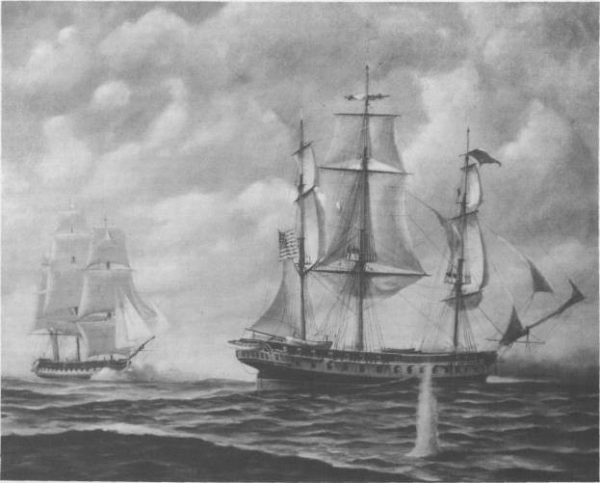March 27 in U.S. military history
1794: President George Washington signs “An act to provide a naval armament” authorizing the construction of six frigates. Three years later at Philadelphia the USS United States slides into the Delaware River, becoming the United States Navy’s first ship. She is soon followed by Constellation, Constitution, Chesapeake, Congress, and President.

1814: During the War of 1812, a force of 2,000 U.S. soldiers and some 600 Native American allies led by Brig. Gen. Andrew Jackson annihilate 1,000 Creek Indians in Mississippi Territory, which is present-day Central Alabama. Jackson’s brutal victory in the Battle of Horseshoe Band brings an end the Creek War, handing over millions of acres of land to the United States.
1836: Days after Col. James Fannin and over 400 of his Texian Army soldiers surrender to the Mexicans during the Texas Revolution, Gen. Antonio Lopez de Santa Anna orders that the prisoners of war be executed by firing squad. Soldiers that survived the gunfire are finished off with knives and clubs, their bodies piled up and burned
1945: As the Soviet Red Army captures Danzig and the Anglo-American forces having crossed the Rhine River, Supreme Allied Commander Gen. Dwight Eisenhower writes Soviet premier Joseph Stalin to coordinate the final assault on Nazi Germany.
With Iwo Jima under American control, the 5th Marine Division ships out for Hawaii to prepare for the invasion of Japan. Of the three Marine divisions that fought on Iwo Jima, the “Spearhead” Division suffered the most casualties, but fortunately for these leathernecks, their fighting days are over.
1953: When the Marines launch a counterattack against entrenched communist forces at Outpost Reno, Corpsman Francis C. Hammond exposes himself to enemy fire to treat his wounded Marines for four exhausting hours, becoming critically wounded himself. When his unit was ordered to withdraw, Hammond remains behind to assist the incoming medics treat and evacuate the casualties, but is killed by an enemy mortar. For his actions, Hammond is posthumously awarded the Medal of Honor.
1964: Within moments after the Great Alaskan Earthquake — the second-strongest recorded quake in history — the U.S. military is on-hand to assist with recovery efforts. The magnitude 9.2 earthquake and its accompanying tsunami wave kills 139 Alaskans. Soldiers work quickly to restore communications with the lower 48 states while ships, planes, and vehicles rush in food and supplies.
1975: With the North Vietnamese Army bearing down on Da Nang Air Base, Air America, World Airways, and other air services are flying out refugees as fast as they can. On this date, the U.S. Navy begins a four-day evacuation that saves some 30,000 South Vietnamese from the communist invasion. The refugees are so desperate – including many panicked South Vietnamese soldiers – that they cling to the landing gear and air stairs as the planes take off.
1999: On the fourth night of Operation ALLIED FORCE, Lt. Col. Dale Zelko’s F-117A Nighthawk stealth fighter is hit by a Yugoslavian Army surface-to-air missile after completing a bombing run over Belgrade. Zelko ejects from the seemingly invincible aircraft – the only time an F-117 is ever shot down – and is rescued eight hours later by a a combat search and rescue team.
